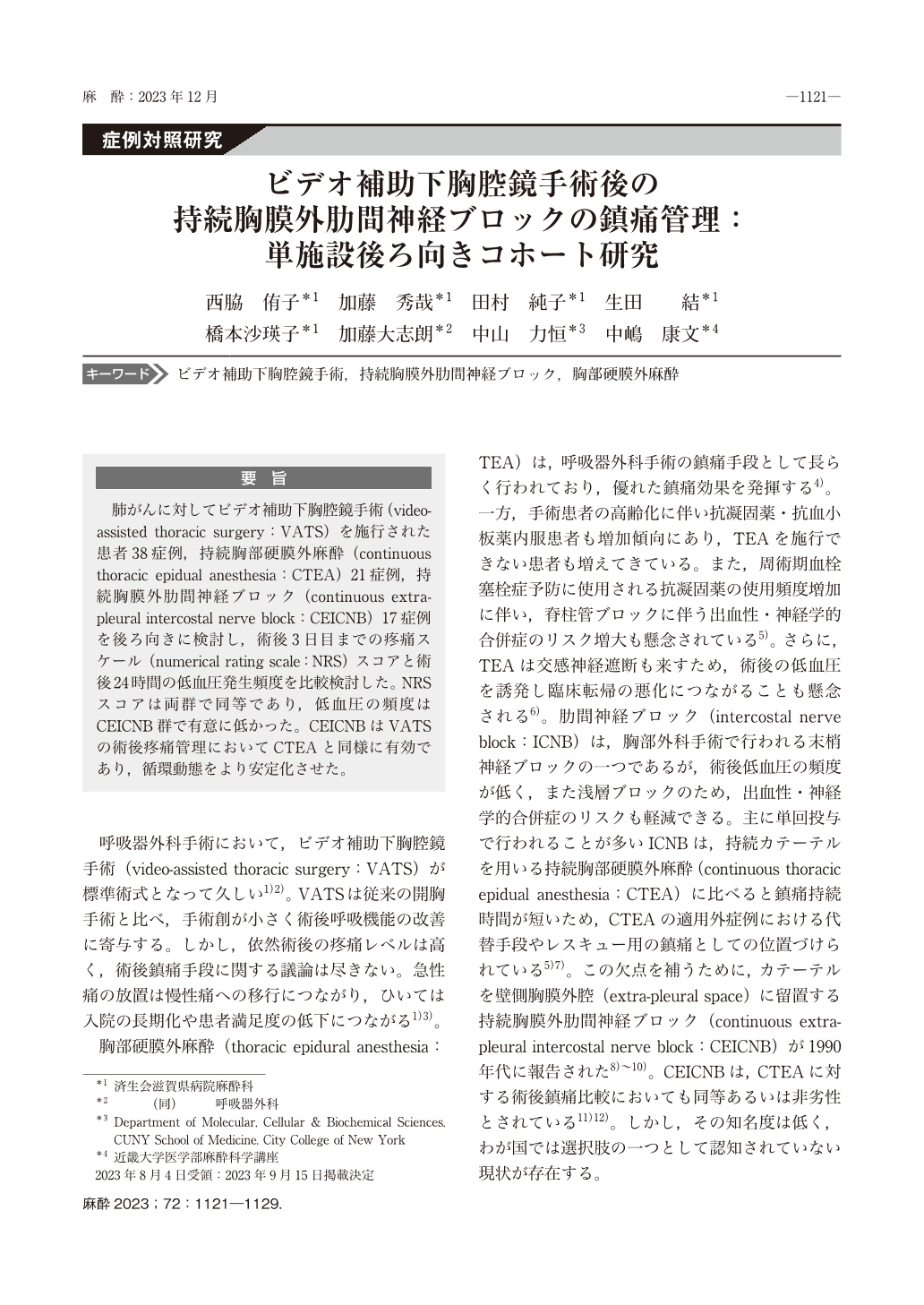Japanese
English
- 有料閲覧
- Abstract 文献概要
- 1ページ目 Look Inside
- 参考文献 Reference
要旨
肺がんに対してビデオ補助下胸腔鏡手術(video-assisted thoracic surgery:VATS)を施行された患者38症例,持続胸部硬膜外麻酔(continuous thoracic epidual anesthesia:CTEA)21症例,持続胸膜外肋間神経ブロック(continuous extra-pleural intercostal nerve block:CEICNB)17症例を後ろ向きに検討し,術後3日目までの疼痛スケール(numerical rating scale:NRS)スコアと術後24時間の低血圧発生頻度を比較検討した。NRSスコアは両群で同等であり,低血圧の頻度はCEICNB群で有意に低かった。CEICNBはVATSの術後疼痛管理においてCTEAと同様に有効であり,循環動態をより安定化させた。
Background:Video-assisted thoracic surgery(VATS)is a commonly performed thoracic surgical procedure. Postoperative VATS pain remains a challenging issue. We investigated whether a continuous extra-pleural intercostal nerve block(CEICNB)is useful and beneficial compared with continuous thoracic epidural anesthesia(CTEA)for postoperative VATS pain.
Methods:We retrospectively analyzed the cases of 38 patients who received CTEA or CEICNB during VATS for lung cancer. The primary study outcomes were(i)the patients’ numerical rating scale(NRS)pain scores from the day of surgery to the third postoperative day and(ii)the frequency of hypotension in the 24 hr immediately after the VATS.
Results:The NRS scores from the day of surgery to the third postoperative day were comparable between the CEICNB and CTEA groups. The frequency of hypotension at 24 hr postoperatively was significantly lower in the continuous CEICNB group.
Conclusions:CEICNB was as effective as CTEA in the post-VATS management of pain, and it significantly prevented postoperative hypotension.

Copyright © 2023 KOKUSEIDO CO., LTD. All Rights Reserved.


